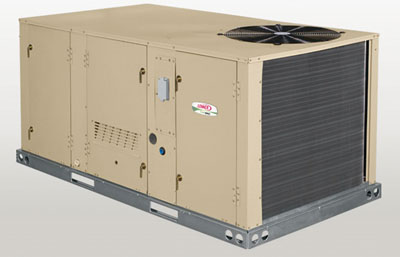Lennox Commercial
Follow this checklist to take a close look at your spending and implement cost-reducing strategies.
Today’s shrinking budgets and rising energy costs have business owners scrambling to save money wherever they can. And that often means finding ways to reduce overall operational expenditures. By taking a close look at spending and implementing cost-reducing strategies, your business can realize significant operational savings. Use this top-to-bottom checklist, below, to begin:
Analyze your expenses
Take a look at the books to get an overall outlook on costs:
• Use percentages instead of dollar amounts to discover where most of your expenses are allocated.
• Use your profit-and-loss income statement to determine which expenses to cut: Compare this year to last, compare expenses to your own budgeted figures, and compare percentages to the operating ratios for your line of business.
• Examine large items and prioritize your biggest expenses, such as HVAC energy usage, along with service and maintenance costs.
Hire a Commercial Energy Auditor
An auditor will come out to your building, interview on-site engineers and managers and inspect lighting, HVAC, controls, air compressors, water-consuming equipment and anything else that is using energy. Then, he or she will help you determine ways to conserve energy use to reduce operational expenses. For example, your commercial HVAC unit is probably your biggest consumer, accounting for 35% to 50% of a building’s energy usage. Investing in regular tune-ups can cut your energy bill by 5%.
Upgrade your HVAC equipment
Not only are improvements to commercial heating, cooling and ventilation systems some of the fastest ways to reduce operational costs, they also offer several immediate and long term benefits. These include lower energy bills, fewer service calls and less downtime.
 Look for HVAC equipment that features the following:
Look for HVAC equipment that features the following:
• High energy efficiency ratings
As much as half of the energy used by a commercial building is consumed by its HVAC system. Replacing an older rooftop unit with a new, high-efficiency model can reduce utility bills by hundreds of dollars per unit. Light commercial units now are rated up to 17.0 SEER. And, adding a solar powered commercial energy system can increase efficiency even further.
• Simplified wiring system and an easy-to-navigate controller
Selecting equipment with keyed connectors that are color-coded and labeled is a great way to eliminate field wiring errors and reduce installation hours and problems on the job site. Purchasing equipment with unit controllers featuring simple-to-use push buttons and easy-to-read text displays will also make installation faster and more accurate.
These items not only save time and money, they also help make sure these units have been installed correctly. This is one of the best ways to ensure high-efficiency systems reach the energy efficiency levels they’re designed to achieve.
• Ability to conserve energy during partial cooling operation
Most commercial HVAC systems provide partial cooling during a majority of the year. Therefore, making sure you use a system that can dramatically reduce energy usage when partial cooling is needed. Supply fan technology is a great way to make sure you provide just the right amount of cooling while saving energy.
Examine service performance
Regular service reports show exactly how the equipment is operating and verify that service and maintenance were performed. Look for a system that can detail run times and on/off cycles of critical components (compressors, condensing fans, filters and power exhaust), as well as total power-on time and sensor readings for outside air temperature, return air temperature and discharge air temperature.
Service reports give technicians a snapshot of unit operation before and after service, illustrating the change in operation. Units that maintain a log of status or alarm messages (stamped with time and date) help verify that the unit has been operating correctly and there were no issues since the last service or maintenance call.
Focus on preventive maintenance
Like most mechanical equipment, commercial HVAC products require routine preventive maintenance to keep them running at their highest performance level. Performing preventive maintenance services on your equipment will help you save money by ensuring the units are operating efficiently and using less energy. This type of work can also prevent costly downtime in a business, such as sacrificed sales due to uncomfortable temperatures.
Finally, many times the contractors performing preventive maintenance services can identify small problems and fix them on-site before they become much larger and require an emergency call or a much more expensive solution.
Pick the right service company
Look for a company that performs its own service work, and doesn’t hire it out, like many of the large national HVAC service companies. Among the benefits you’ll gain by hiring a qualified, single-source company is consistency: The techs are all trained the same way, follow the same check-in, check-out and replacement procedures, and rate equipment using the same standards and procedures.
— Mike Walker is director of product management and marketing for Lennox Commercial. A worldwide leader in residential and commercial heating and air conditioning systems, Lennox Industries Inc. is based near Dallas. Lennox Industries is a subsidiary of Lennox International Inc., a global leader in the HVAC/R markets. The author may be reached at [email protected].
